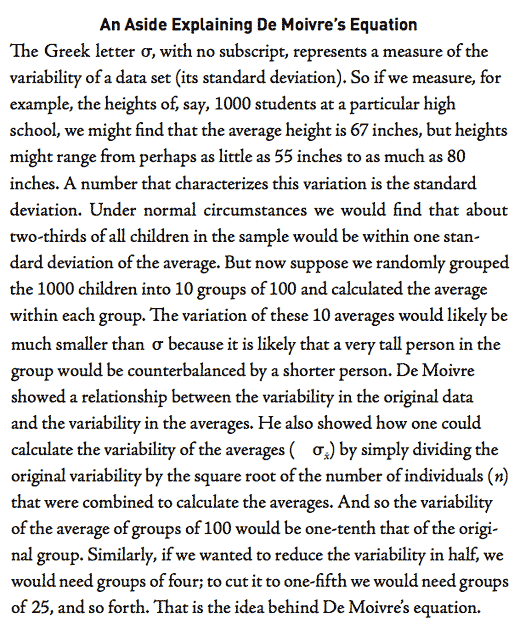science

Insomnia, euphoria, anxiety and obsession; modern science shows us that these symptoms are just as likely to be found in someone who is deeply in love as someone who is having mental problems. Should these people be once again diagnosed as having “lovesickness”, as they would have been in the past? […]
Although lovesickness is not used as a medical diagnosis anymore, recent research in the fields of clinical psychology, psychiatry and neuroscience has more fully consolidated the pathological components of passionate love, showing that people in love are not so different from patients suffering bipolar disorder, obsessive-compulsive disorder and substance-related disorders.
{ United Academics | Continue reading }
neurosciences, relationships | March 26th, 2013 6:37 am

Quantum Archaeology (QA) is the controversial science of resurrecting the dead including their memories. It assumes the universe is made of events and the laws that govern them, and seeks to make maps of brain/body states to the instant of death for everyone in history.
Anticipating process technologies due in 20 – 40 years, it involves construction of the Quantum Archaeology Grid to plot known events filling the gaps by cross-referencing heuristically within the laws of science. Specialist grids already exist waiting to be merged, including cosmic ones with trillions of moving evolution points. The result will be a mega-matrix good enough to describe and simulate the past. Quantum computers and super-recursive algorithms both in their infancy may allow vast calculation into the quantum world, and artificial intelligence has no upper limit to what it might do.
{ Transhumanity | Continue reading }
photo { Erwin Olaf }
future, ideas, memory, technology | March 25th, 2013 11:08 am

People often reject creative ideas, even when espousing creativity as a desired goal. To explain this paradox, we propose that people can hold a bias against creativity that is not necessarily overt and that is activated when people experience a motivation to reduce uncertainty.
{ SAGE | Continue reading | Thanks Tim }
photo { Adam Broomberg & Oliver Chanarin }
ideas, photogs, psychology | March 24th, 2013 3:31 pm

Who is smarter: a person or an ape? Well, it depends on the task. Consider Ayumu, a young male chimpanzee at Kyoto University who, in a 2007 study, put human memory to shame. Trained on a touch screen, Ayumu could recall a random series of nine numbers, from 1 to 9, and tap them in the right order, even though the numbers had been displayed for just a fraction of a second and then replaced with white squares.
I tried the task myself and could not keep track of more than five numbers—and I was given much more time than the brainy ape. In the study, Ayumu outperformed a group of university students by a wide margin. The next year, he took on the British memory champion Ben Pridmore and emerged the “chimpion.” […]
A growing body of evidence shows that we have grossly underestimated both the scope and the scale of animal intelligence. Can an octopus use tools? Do chimpanzees have a sense of fairness? Can birds guess what others know? Do rats feel empathy for their friends? Just a few decades ago we would have answered “no” to all such questions. Now we’re not so sure.
{ WSJ | Continue reading }
animals, science | March 24th, 2013 3:07 pm

Recent experimental psychology […] suggests that the best leaders — both male and female — seem to have relatively high testosterone, which is linked to decreased fear and increased tolerance for risk and desire to compete, and low cortisol, which is linked to decreased anxiety. Effective leadership is associated with hormone levels, and with this hormone profile, leaders are confident and willing to take risks, but not overly threatened or reactive to stressors. [..]
It turns out these two hormones, testosterone and cortisol, are very touchy, sensitive to social and physical cues and fluctuating a great deal over the course of a single day. As Sandberg mentioned in her book, our research shows that people can change their own hormone levels and behaviors, by “faking it” — by “power posing,” or adopting expansive, open nonverbal postures that are strongly associated with power and dominance across the animal kingdom (imagine standing with hands on hips and feet spread, like Wonder Woman). By holding these postures for just two minutes before entering a high-stress situation, people (both men and women) can increase their testosterone by about 20% and decrease their cortisol by about 25%.
{ Harvard Business Review | Continue reading | Thanks Tim }
guide, hormones | March 23rd, 2013 3:57 am

XYY syndrome is an aneuploidy (abnormal number) of the sex chromosomes in which a human male receives an extra Y-chromosome.
Some medical geneticists question whether the term “syndrome” is appropriate for this condition because its clinical phenotype is normal and the vast majority (an estimated 97% in Britain) of 47,XYY males do not know their karyotype.
{ Wikipedia | Continue reading }
Triple X syndrome is a form of chromosomal variation characterized by the presence of an extra X chromosome in each cell of a human female. The condition occurs only in females. […]
Because of the lyonization, inactivation, and formation of a Barr body in all female cells, only one X chromosome is active at any time. Thus, Triple X syndrome most often has only mild effects, or has no unusual effects at all.
Symptoms may include tall stature; small head (microcephaly); vertical skinfolds that may cover the inner corners of the eyes (epicanthal folds); delayed development of certain motor skills, speech and language; learning disabilities, such as dyslexia; or weak muscle tone.
{ Wikipedia | Continue reading }
Klinefelter syndrome, or XXY syndrome, is a genetic disorder in which there is at least one extra X chromosome to a standard human male karyotype, for a total of 47 chromosomes rather than the 46 found in genetically normal humans. […]
This chromosome constitution exists in roughly between 1:500 to 1:1000 live male births but many of these people may not show symptoms. […]
Affected males are often infertile, or may have reduced fertility. […] XXY males are also more likely than other men to have certain health problems, which typically affect females, such as breast cancer and osteoporosis.
{ Wikipedia | Continue reading }
photos { Frieke Janssens }
genders, genes | March 21st, 2013 2:38 pm

Don’t mistake addiction for love. This is tricky because, neurochemically speaking, the two are very similar–studies have shown that when romantic partners who are intensely in love are exposed to photographs of their beloved, the brain regions that become activated are the same regions that are activated in cocaine addicts when they are craving cocaine. But even if love has some addiction-like qualities, healthy love is likely to involve other qualities as well, such as respect, trust, and commitment, qualities that keep a relationship strong even on those days when excitement and passion are not at the forefront. Addictive love, by contrast, tends to be more singularly focused on attaining those “highs,” whatever the cost. Partners whose behavior is unpredictable (e.g., they don’t call when they say they will), are, unfortunately, especially likely to keep you hooked, since their inconsistent affection keeps you on your toes and wanting more. If you are trying to break free from a relationship that feels more like an addiction than a loving bond, one strategy is to reframe your thoughts and emotions about that person as if they are cold, clinical biological processes in order to gain a healthy distance from them. For example, after a week of not calling Mr. or Ms. Wrong, you feel a wave of longing in your chest and think, “But I really do love him/her… I should call him/her right now…” Instead, you could notice that sensation and tell yourself, “Interesting, there goes my caudate nucleus releasing dopamine and producing a sensation of longing. Okay, back to work.”
{ Psych Your Mind | Continue reading }
neurosciences, psychology, relationships | March 21st, 2013 12:39 pm

Prevailing wisdom suggests that our genes remain largely fixed over time. But, an emerging field of research is beginning to prove this intuition wrong. Scientists are uncovering increasing evidence that changes in the expression of hundreds of genes can occur as a result of the social environments we inhabit. As a result of these dynamics, experiences we have today can affect our health for days and even months into the future. […]
People who experience chronic social isolation show reduced antiviral immune response gene activity, which leaves them vulnerable to viral infections like the common cold. […] Other social conditions that have been found to influence human gene expression include being socially evaluated or rejected, which can have different consequences for different people depending on their sensitivity to social threat.
{ APS | Continue reading }
photo { Jonathan Waiter }
genes, health, relationships | March 20th, 2013 10:43 am

All seems to indicate that the next decade, the 20s, will be the magic decade of the brain, with amazing science but also amazing applications. With the development of nanoscale neural probes and high speed, two-way Brain-Computer interfaces (BCI), by the end of the next decade we may have our iPhones implanted in our brains and become a telepathic species. […]
Last month the New York Times revealed that the Obama Administration may soon seek billions of dollars from Congress for a Brain Activity Map (BAM) project. […] The project may be partly based on the paper “The Brain Activity Map Project and the Challenge of Functional Connectomics” (Neuron, June 2012) by six well-known neuroscientists. […]
A new paper “The Brain Activity Map” (Science, March 2013), written as an executive summary by the same six neuroscientists and five more, is more explicit: “The Brain Activity Map (BAM), could put neuroscientists in a position to understand how the brain produces perception, action, memories, thoughts, and consciousness… Within 5 years, it should be possible to monitor and/or to control tens of thousands of neurons, and by year 10 that number will increase at least 10-fold. By year 15, observing 1 million neurons with markedly reduced invasiveness should be possible. With 1 million neurons, scientists will be able to evaluate the function of the entire brain of the zebrafish or several areas from the cerebral cortex of the mouse. In parallel, we envision developing nanoscale neural probes that can locally acquire, process, and store accumulated data. Networks of “intelligent” nanosystems would be capable of providing specific responses to externally applied signals, or to their own readings of brain activity.”
{ IEET | Continue reading }
photo { Adam Broomberg & Oliver Chanarin }
brain, future, neurosciences, technology | March 18th, 2013 12:13 pm

What constitutes a dangerous equation? […] Few would disagree that the obvious winner in this contest would be Einstein’s iconic equation
E=MC2
for it provides a measure of the enormous energy hidden within ordi- nary matter. Its destructive capability was recognized by Leo Szilard, who then instigated the sequence of events that culminated in the construction of atomic bombs.
This is not, however, the direction I wish to pursue. Instead, I am interested in equations that unleash their danger, not when we know about them, but rather when we do not; equations that allow us to understand things clearly, but whose absence leaves us dangerously ignorant.* There are many plausible candidates that seem to fill the bill. But I feel that there is one that surpasses all others in the havoc wrought by ignorance of it over many centuries. It is the equation that provides us with the standard deviation of the sampling distribution of the mean; what might be called De Moivre’s equation:

For those unfamiliar with De Moivre’s equation let me offer a brief aside to explain it.

Why have I decided to choose this simple equation as the most dangerous? There are three reasons, related to
(1) the extreme length of time during which ignorance of it has caused confusion,
(2) the wide breadth of areas that have been misled, and
(3) the seriousness of the consequences that such ignorance has
caused.
{ Howard Wainer | PDF }
photo { Adam Broomberg & Oliver Chanarin }
mathematics, photogs | March 17th, 2013 1:51 pm

Medical and health journals have a bias towards publishing findings which are statistically significant, even when they may not also be clinically relevant. This results in authors describing their non significant findings with creative language, to try and make them seem more interesting.
{ Annie Bruton | Continue reading }
ideas, psychology | March 15th, 2013 12:55 pm

Competition is supposed to lead to lower prices and improvements in quality. But, as a study on the automobile smog-testing industry shows, competition can lead to corruption and even public health problems.
{ United Academics | Continue reading }
photo { Mike Brodie }
economics, photogs, psychology | March 14th, 2013 11:34 am

What your mother ate around your conception could have affected your genes, or at least how they function, by switching certain genes on and off through DNA methylation. […]
People in rural parts of the Gambia have dramatic seasonal changes in their diet, because crops are planted at the beginning of the rainy season and harvested at the end, as there is no irrigation the rest of the year. […]
In a paper published in PLoS Genetics, the children conceived in August and September, the peak of the rainy season when nutrition is poor, had higher levels of DNA methylation in five genes, which surprised the researchers, as they had expected lower levels. These included the SLITRK1 gene associated with Tourette’s syndrome, and the PAX8 gene linked to hypothyroidism.
{ Genome Engineering | Continue reading }
photo { Marianna Rothen }
food, drinks, restaurants, genes, kids | March 14th, 2013 11:27 am

Every month, during each menstrual cycle, there is a very small window in which women can conceive. Most estimates are between five to six days, with the peak ovulatory window being a few hours at the end of the fertile window. The onset of a woman’s period is actually at the beginning of the ovulatory cycle, not the end. Though the exact length varies from woman to woman, the average menstrual cycle lasts about twenty-eight days. During the length of a woman’s overall cycle, she goes through three phases: menses, follicular, and luteal. Ovulation occurs between the follicular and luteal phases. The term “peak fertility” refers to a small window (usually thought to be anywhere between two to six days) when a woman’s conception rate goes up. Though technically every woman only ovulates one day a month, the chemistry of the vagina during this time facilitates sperm life (whereas in other phases, the chemistry produces a spermicidal effect). Sperm can actually retain the capacity to fertilize ova after five days at room temperature. However, unlike in many other species, human females are continuously proceptive and receptive to sex regardless of where they are in their monthly cycle.
Thus, Thornhill and Gangestad (2008) propose that women possess dual sexuality – estrous sexuality and extended sexuality – and that these two distinct forms of sexuality function during different periods of the menstrual cycle. Estrous sexuality (i.e., conceptive or reproductive sexuality) occurs within the fertile period of the menstrual cycle and female sexual preferences and motivations function to obtain “good genes” for offspring through mating with high-quality males. Extended sexuality (i.e., non- conceptive or non-reproductive sexuality), is complementary to estrous sexuality, functioning during unfertile periods to obtain non-genetic material benefits from mates in exchange for sexual access.
{ Journal of Social, Evolutionary, and Cultural Psychology | PDF }
science, sex-oriented | March 13th, 2013 9:23 am

Nanoparticles carrying a toxin found in bee venom can destroy human immunodeficiency virus (HIV) while leaving surrounding cells unharmed.
The finding is an important step toward developing a vaginal gel that may prevent the spread of HIV, the virus that causes AIDS.
{ Washington University in St. Louis | Continue reading }
photo { Dan Winters, Dead Bees, Oakdale, California, March 11-15, 2006 }
bees, health, poison, science, technology | March 12th, 2013 10:52 am

Here we report on the results of an experimental study of the conditions under which coffee spills for various walking speeds and initial liquid levels in the cup. These observations are analyzed from the dynamical systems and fluid mechanics viewpoints as well as with the help of a model developed here. Particularities of the common cup sizes, the coffee properties, and the biomechanics of walking proved to be responsible for the spilling phenomenon.
{ American Physical Society | Abstract | via Improbable }
Mayer and Krechetnikov have found that noise—potentially caused by uneven steps or small jerks of the cup — plays an important role in amplifying the natural oscillations of coffee into a full-blown spill.
{ American Physical Society | Synopsis }
food, drinks, restaurants, science | March 12th, 2013 10:22 am

The paper begins with three individual sports (tennis, golf, and boxing) in which home advantage has been studied. […] It moves on to individual and team sports in the Olympics, where home advantage has also been studied. […] Finally, data are presented for two individual efforts embedded in team sports (free throws in basketball and shootouts in ice hockey). […]
Subjectively evaluated sports such as diving, gymnastics, or figure skating usually show sizable and significant home advantages. […] Except for subjectively evaluated sports, home advantage is not a major factor in individual sports, much less does it play a role in individual sports comparable to its role in team sports.
{ ScienceDirect | Continue reading }
images { 1 | 2 }
psychology, sport | March 10th, 2013 6:03 pm

Research done in the Universities of Granada (Spain), Freiburg (Germany) and University College London (UK) has demonstrated that when we have a low opinion of somebody, we are more likely to reject their money, even though the offer is attractive, because the social information we have on that person influences our decision. Furthermore, people are prepared to even lose money rather than accept it from those they do not hold in high consideration.
{ UGR | Continue reading }
economics, psychology | March 8th, 2013 6:59 am

The purpose of this paper was to improve the butt lifting effect of tight jeans based on changing parameters of pattern by CAD. In the scope of research, body measurements were carried out and three kinds of hip shape (flat, normal and plump) were identified with K-Mean Cluster Analysis according to the hip convex angle. Then butt lifting effect of jeans was discussed through changing the back crutch angle and the style line angle of yoke. the corresponding sample jeans were fitted by 15 subjects of three hip shapes and evaluated by both subjects and 15 specialist people in fashion field. It was concluded that the butt lifting effect could be enhanced by increasing the back crutch angle and decreasing the style line angle of yoke.
{ IEEE | Continue reading }
photo { Man Ray, Homage to D.A.F. de Sade, 1933 }
fashion, science | March 8th, 2013 6:51 am

One of the strangest concepts in quantum mechanics is the notion of entanglement. This is the idea that two quantum particles can be so deeply linked that they share the same existence. When that happens, a measurement on one immediately influences the other, regardless of the distance between them.
This “spooky action at a distance,” as Einstein called it, has puzzled and fascinated physicists since it was first discussed in the 1930s. Einstein initially used it as evidence of the failure of quantum mechanics since this instantaneous action clearly seemed to violate relativity.
Later, physicists realised there was no conflict because the “spooky action” cannot be used to send information faster than the speed of light. However, important questions remain about the nature of entanglement and spooky action. “If the spooky action does exist, what is its speed?” ask Juan Yin and pals at the University of Science and Technology of China in Shanghai.
Today, they reveal the answer. They say spooky action travels at least four orders of magnitude faster than light.
{ The Physics arXiv Blog | Continue reading }
photo { Arianna Arcara and Luca Santese, Found Photos in Detroit, 2009-2010 }
science | March 7th, 2013 12:12 pm
























